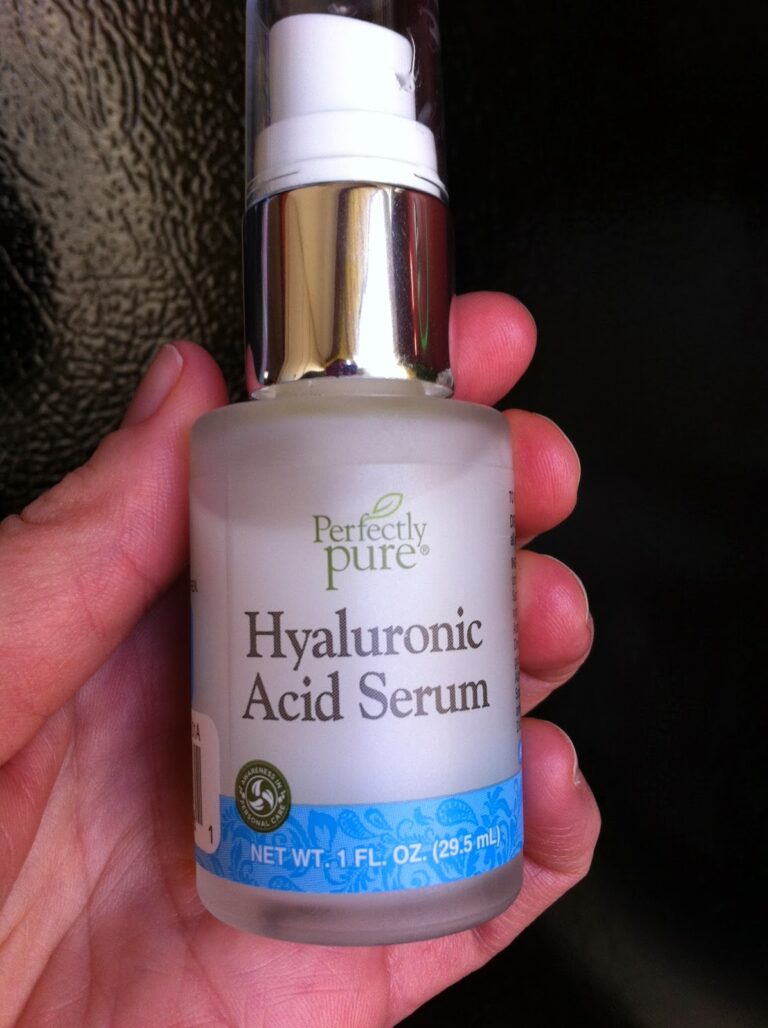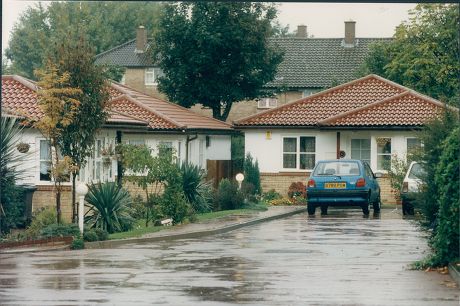How To Get Your Car To Smell Brand New: A Comprehensive Guide to Restoring That Pristine Scent
How To Get Your Car To Smell Brand New: A Comprehensive Guide to Restoring That Pristine Scent cars.truckstrend.com
There’s an undeniable magic to the smell of a brand-new car. It’s a complex symphony of fresh materials – leather, plastic, fabric, and adhesives – that evokes a sense of pristine cleanliness, cutting-edge engineering, and exciting possibilities. This unique aroma is more than just a pleasant scent; it’s a sensory signature of quality and newness that enhances the driving experience. Unfortunately, this cherished fragrance is fleeting. Over time, daily commutes, spills, pets, food, smoke, and general wear and tear introduce a myriad of unwanted odors, replacing that invigorating "new car" scent with something far less appealing.
Restoring your car to smell brand new isn’t merely about masking unpleasant odors with a strong air freshener; it’s about a comprehensive approach that eliminates the source of bad smells, cleans every surface, and then subtly reintroduces that elusive fresh aroma. This guide will walk you through the meticulous process, from identifying the culprits to implementing long-lasting solutions, ensuring your vehicle smells as good as the day it rolled off the lot.
How To Get Your Car To Smell Brand New: A Comprehensive Guide to Restoring That Pristine Scent
Understanding the "New Car Smell" and Its Disappearance
Before we dive into the restoration process, it’s helpful to understand what we’re aiming for. The "new car smell" isn’t a single chemical but rather a complex mixture of volatile organic compounds (VOCs) released from the various materials used in a vehicle’s interior. These include chemicals from glues, plastics, fabrics, leather, and even the paint. While some VOCs can be concerning in high concentrations, the levels in a new car are generally considered safe, and it’s their unique combination that creates the distinctive aroma we associate with freshness.
This delightful scent fades over time as the VOCs dissipate and new odors are introduced. Everything from spilled coffee to pet dander, forgotten gym clothes, moisture, and smoke gets trapped in the car’s porous surfaces – carpets, upholstery, and headliners. These trapped particles and their associated bacteria are the primary culprits behind stale, unpleasant car smells. Simply spraying an air freshener only temporarily covers these odors; it doesn’t eliminate them, leading to a frustrating cycle of recurring staleness.
The Foundation: Identifying and Eliminating Odor Sources
The first and most critical step in getting your car to smell brand new is to thoroughly identify and eliminate the source of any existing bad odors. This is where most people go wrong, jumping straight to air fresheners without addressing the root cause.
1. Declutter and Inspect
- Remove Everything: Start by taking absolutely everything out of your car – floor mats, trash, papers, old food wrappers, gym bags, kids’ toys, loose change, etc. This allows you to see and access every corner.
- Visual Inspection: Look for visible stains, spills, mold, or mildew. Pay close attention to under the seats, in the glove compartment, the center console, and the trunk. These hidden spots are often breeding grounds for odors.

2. Deep Vacuuming – The Dust and Debris Destroyer
Dust, dirt, food crumbs, and pet hair settle deep into carpets, upholstery, and floor mats, contributing significantly to stale odors. A powerful vacuum with appropriate attachments is essential.
- Tools: A shop-vac or a powerful car-specific vacuum with crevice tools, brush attachments, and upholstery nozzles.
- Technique:
- Carpets and Floor Mats: Vacuum thoroughly, moving in multiple directions to dislodge embedded dirt. Don’t forget to vacuum the underside of floor mats if they’re particularly dirty.
- Upholstery: Use the upholstery attachment to vacuum seats, headrests, and door fabric. For cloth seats, pressing down firmly can help pull out deeply embedded particles.
- Crevices: Use the crevice tool to get into tight spots like between seats, under pedals, and along console edges.
- Trunk: Don’t forget to vacuum the trunk liner and any carpeted areas.
3. Surface Cleaning – Wiping Away the Grime
Every hard surface in your car collects dust, grime, and oils from skin contact, which can contribute to a less-than-fresh smell.
- Dashboard and Door Panels: Use a microfiber cloth and a dedicated interior cleaner (non-greasy, matte finish preferred) to wipe down all plastic, vinyl, and rubber surfaces. Avoid products that leave a shiny, greasy residue, as these can attract more dust and look unnatural.
- Center Console and Steering Wheel: These areas are touched constantly and accumulate significant grime. Clean them meticulously.
- Vents: Use a detailing brush or a cotton swab to clean dust from air vents.
- Cupholders: These are notorious for spills. Clean them thoroughly, removing any sticky residues.
- Windows and Mirrors: Clean with a streak-free glass cleaner and a clean microfiber cloth. Dirty windows can affect overall air quality and perception of cleanliness.
4. Upholstery and Carpet Cleaning – Tackling Embedded Stains and Odors
This is where the real magic happens for stubborn smells.
- Spot Cleaning: For specific stains, use a dedicated automotive upholstery cleaner. Test on an inconspicuous area first. Apply the cleaner, agitate gently with a brush, and blot dry with a clean microfiber towel. Avoid oversaturating.
- Deep Cleaning (Extraction): For pervasive odors or widespread soiling, consider using a carpet and upholstery extractor (steam cleaner or wet vac). These machines inject a cleaning solution into the fabric and then extract the dirty water, pulling out embedded grime and odors.
- For Cloth: Follow product instructions for the cleaning solution. Ensure adequate drying time to prevent mildew. Open doors and windows, or use a fan.
- For Leather: Use a pH-neutral leather cleaner and conditioner. Apply with a microfiber cloth, gently wipe, and then condition to keep the leather supple and prevent cracking. Avoid harsh chemicals that can dry out or damage the leather.
5. Headliner Care – The Overlooked Odor Trap
The headliner (the fabric on the car’s ceiling) absorbs odors, especially from smoke or strong cooking smells.
- Gentle Cleaning: The headliner adhesive can be delicate. Use a very lightly dampened microfiber cloth with a diluted interior cleaner or a dedicated headliner cleaner. Spray the cleaner onto the cloth, not directly onto the headliner, and gently blot or wipe. Do not scrub or saturate.
Targeting Persistent Odors: Beyond the Surface Clean
Even after a deep clean, some odors might linger. These often require specialized treatment.
1. Odor Eliminators – Neutralizing the Nasties
- Enzyme-Based Cleaners: These are excellent for organic odors (vomit, urine, milk spills). Enzymes break down the odor-causing molecules. Apply directly to the affected area, allow it to dwell, and then blot.
- Activated Charcoal: A natural odor absorber. Place bags of activated charcoal in the car overnight or for several days. It doesn’t mask odors; it absorbs them. Great for general staleness.
- Ozone Generators (Use with Caution!): For severe, deeply ingrained odors like smoke or mold, an ozone generator can be highly effective. Ozone (O3) oxidizes odor-causing molecules. However, these must be used ONLY in an unoccupied vehicle, and the car must be thoroughly aired out afterward. Ozone can be harmful to humans and pets, and prolonged exposure can damage interior materials. If unsure, leave this to professionals.
2. HVAC System Cleaning – The Air You Breathe
Your car’s heating, ventilation, and air conditioning (HVAC) system can harbor mold, mildew, and bacteria, leading to a musty smell, especially when the AC is first turned on.
- Replace Cabin Air Filter: This is a crucial step. A clogged or dirty cabin air filter can restrict airflow and harbor unpleasant smells. Replacing it is usually a simple DIY task.
- HVAC Cleaner/Deodorizer: Sprays are available that you can apply directly into the AC intake vents (usually at the base of the windshield or under the glove box, check your car’s manual). These clean the evaporator core and ducts, killing mold and bacteria. Run the AC on high with the cleaner circulating.
Reintroducing the "New Car" Scent
Once your car is truly clean and odor-free, you can strategically reintroduce the "new car" scent. The goal here is subtlety, not an overpowering artificial smell.
1. "New Car" Scent Products
- Sprays: Many detailing brands offer "new car scent" sprays. Lightly mist carpets and cloth upholstery. Do not overspray, as it can be overwhelming.
- Vent Clips/Hanging Air Fresheners: While traditional air fresheners often just mask odors, "new car" scent versions, used after a deep clean, can provide a pleasant, consistent background aroma. Choose high-quality ones that aren’t too strong.
- Scented Detailers/Protectants: Some interior detailers for plastic and vinyl, or leather conditioners, come with a subtle new car scent. This integrates the scent into your regular cleaning routine.
2. Natural Alternatives (Temporary Boost)
- Baking Soda: After cleaning, sprinkle baking soda on carpets and cloth seats, let it sit for a few hours (or overnight), and then vacuum thoroughly. It absorbs residual odors.
- Coffee Grounds: A small, open container of fresh coffee grounds can absorb odors and leave a subtle, pleasant aroma.
- Essential Oil Diffusers: A car diffuser with a very light, clean essential oil blend (like citrus or cedarwood, avoiding overpowering floral scents) can provide a fresh atmosphere.
Maintenance for Long-Lasting Freshness
Achieving the new car smell is one thing; maintaining it is another. Consistency is key.
- Regular Vacuuming: A quick vacuum every week or two prevents dirt and debris buildup.
- Wipe Down Surfaces: Keep interior surfaces clean with a quick wipe down after each use or at least weekly.
- Address Spills Immediately: The quicker you clean a spill, the less chance it has to set in and cause an odor.
- Ventilation: Regularly air out your car by opening windows, especially after transporting pets, food, or after a rainy day to prevent mildew.
- No Smoking: Smoking in your car is the quickest way to permanently embed an unpleasant odor into every surface.
- Use Floor Mats: Rubber floor mats are easier to clean and protect the underlying carpet.
- Protective Coatings: Applying fabric protectants to upholstery and carpets can make future spills easier to clean.
Professional Detailing vs. DIY
While much of this process can be done yourself, there are times when professional help is invaluable.
- DIY: Cost-effective, allows for personalized attention, and great for regular maintenance and mild odor issues.
- Professional Detailing: Recommended for severe odor problems (e.g., heavy smoke, mold, extensive pet odors, or neglected vehicles). Detailers have industrial-strength equipment (extractors, ozone generators), specialized chemicals, and the expertise to tackle the toughest challenges safely and effectively. They can often achieve a deeper clean and longer-lasting results.
Challenges and Solutions
- Mold/Mildew: Caused by moisture. Locate and eliminate the moisture source (leaking windows, clogged drains). Treat with a dedicated mold cleaner. Ensure thorough drying.
- Pet Odors: Deep clean with enzyme cleaners. Regular vacuuming and dedicated pet hair removers are essential.
- Smoke Odor: Extremely difficult to remove completely. Requires multiple deep cleanings, ozone treatment (professional recommended), and potentially replacing the cabin air filter and even some interior components in severe cases.
Conclusion
Getting your car to smell brand new is a process that goes far beyond simply hanging an air freshener. It requires a methodical approach that prioritizes eliminating existing odors through deep cleaning, addresses hidden sources like the HVAC system, and then subtly reintroduces a fresh, clean scent. By following these steps – from meticulous vacuuming and surface cleaning to targeted odor elimination and consistent maintenance – you can reclaim that pristine, invigorating "new car" aroma, transforming your driving experience into one of renewed freshness and comfort. Remember, a truly clean car doesn’t just look good; it smells good, too.
Table Price: Estimated Costs for Getting Your Car to Smell Brand New
This table provides estimated cost ranges for various products and services you might utilize to achieve a brand-new car smell. Prices can vary significantly based on brand, quality, location, and service provider.
| Category | Item/Service Description | Estimated Cost Range (USD) | Notes/Benefits |
|---|---|---|---|
| DIY Cleaning Supplies | |||
| Vacuum Cleaner | Handheld car vac or shop-vac | $30 – $150+ | Essential for removing dirt, dust, and debris from carpets and upholstery. |
| Microfiber Cloths | Pack of 10-20 | $10 – $30 | Non-abrasive, highly absorbent, great for interior surfaces and glass. |
| Interior Cleaner | All-purpose, non-greasy formula for plastics, vinyl, rubber | $10 – $25 (per bottle) | Cleans dashboards, door panels, consoles without leaving residue. |
| Upholstery Cleaner | Spray-on, foam, or spot cleaner for fabric seats/carpets | $10 – $30 (per bottle) | Tackles specific stains and embedded dirt on fabric surfaces. |
| Leather Cleaner/Cond. | pH-neutral cleaner and conditioner for leather surfaces | $15 – $40 (per bottle) | Cleans and protects leather, preventing drying and cracking while maintaining its natural scent. |
| Glass Cleaner | Ammonia-free, streak-free formula | $5 – $15 (per bottle) | Ensures crystal clear windows, contributing to overall freshness perception. |
| Detailing Brushes/Tools | Small brushes, crevice tools, air vent cleaners | $10 – $30 (per kit) | Helps reach tight spots and dislodge stubborn dirt. |
| Odor Elimination & Scent | |||
| Activated Charcoal Bags | Reusable bags for odor absorption | $15 – $30 (per pack) | Natural, effective absorber for general stale odors; no masking. |
| Enzyme Odor Eliminator | Spray for organic spills (vomit, urine, milk) | $15 – $35 (per bottle) | Breaks down odor-causing molecules, doesn’t just mask. |
| Cabin Air Filter | Replacement filter (model-specific) | $15 – $50 | Crucial for clean air circulating through the HVAC system; prevents musty smells. |
| HVAC System Cleaner | Aerosol spray for AC vents/evaporator | $15 – $30 | Kills mold and bacteria in the AC system, eliminating musty smells from vents. |
| "New Car Scent" Spray | Dedicated car air freshener spray | $10 – $25 (per bottle) | Reintroduces the desired scent after deep cleaning; use sparingly. |
| Equipment (Optional) | |||
| Carpet/Upholstery Extractor | Small household or automotive extractor | $100 – $300+ | For deep cleaning and extraction of embedded dirt and odors from fabric surfaces. |
| Ozone Generator | For professional-level odor removal (e.g., smoke, mold) | $70 – $200+ | Highly effective for severe odors; use with extreme caution in unoccupied vehicle only. |
| Professional Services | |||
| Interior Detail (Basic) | Vacuum, wipe down, window cleaning | $75 – $150 | Good for maintaining freshness after initial deep clean or for lightly soiled interiors. |
| Interior Detail (Deep) | Vacuum, wipe down, upholstery/carpet shampoo/extraction, odor treatment | $150 – $400+ | Recommended for cars with significant odors, stains, or neglected interiors. Includes thorough cleaning and often basic odor elimination. |
| Ozone Treatment (Pro) | Professional application of ozone for severe odors | $50 – $150 (as add-on) | Best for smoke, mold, and persistent strong odors when DIY methods fail. |
Note: Prices are estimates and can vary based on vehicle size, condition, product brand, and service provider location.
Frequently Asked Questions (FAQ)
Q1: How long does the "new car smell" actually last?
A1: The true "new car smell" typically lasts a few weeks to a few months, as the volatile organic compounds (VOCs) that create it dissipate over time. After that, any lingering pleasant scent is usually due to residual freshness from clean materials, which will eventually be replaced by everyday odors if not properly maintained.
Q2: Is the "new car smell" harmful to my health?
A2: While the "new car smell" is caused by VOCs, the levels typically found in new cars are generally considered low enough not to pose significant health risks for most people. Some individuals with chemical sensitivities, asthma, or allergies might experience mild symptoms like headaches or nausea, especially with prolonged exposure in a confined space. It’s always a good idea to ventilate a new car frequently during the first few weeks.
Q3: Can I just use household cleaners like dish soap or laundry detergent to clean my car’s interior?
A3: It’s generally not recommended. Household cleaners are often too harsh or contain ingredients that can damage automotive materials, strip protective coatings, leave residues, or cause discoloration. Automotive-specific cleaners are formulated to be safe and effective for the various plastics, vinyls, fabrics, and leathers found in car interiors.
Q4: My car smells like cigarette smoke. Can I really get rid of that smell completely?
A4: Smoke odor is one of the most challenging to remove because smoke particles penetrate deeply into porous materials like upholstery, headliners, and carpets, and even into the HVAC system. While it’s difficult to remove 100%, a thorough deep cleaning, including shampooing all fabric surfaces, replacing the cabin air filter, and professional ozone treatment, can significantly reduce or eliminate the smell. Consistent ventilation and avoiding further smoking are crucial for long-term success.
Q5: How often should I clean my car’s interior to maintain a fresh smell?
A5: For optimal freshness, a light interior cleaning (vacuuming, wiping down surfaces) once a week or every two weeks is ideal. A more thorough deep clean, including upholstery shampooing or stain removal, might be needed every 3-6 months, depending on usage, spills, and the presence of pets or smokers. Regular maintenance prevents odors from building up and becoming stubborn.



